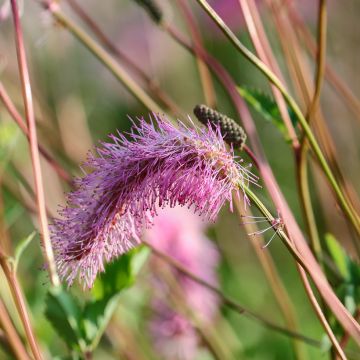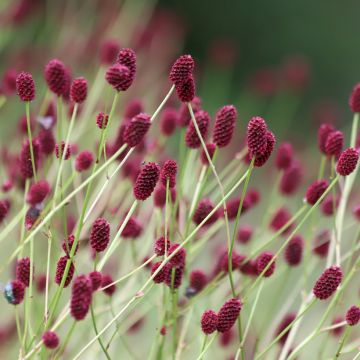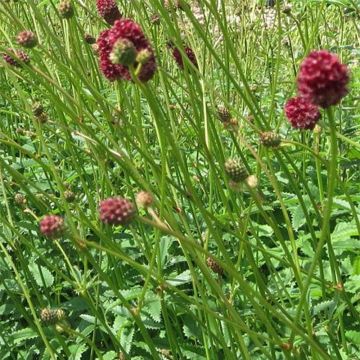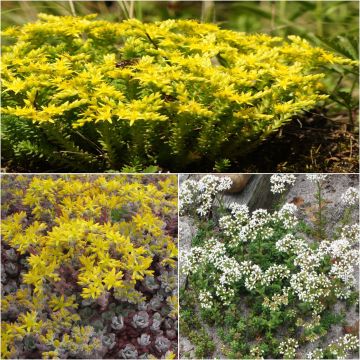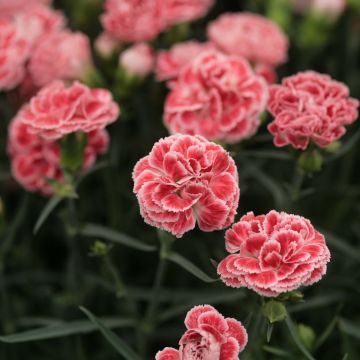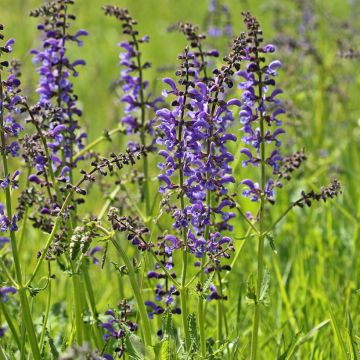

Sanguisorba hakusanensis


Sanguisorba hakusanensis
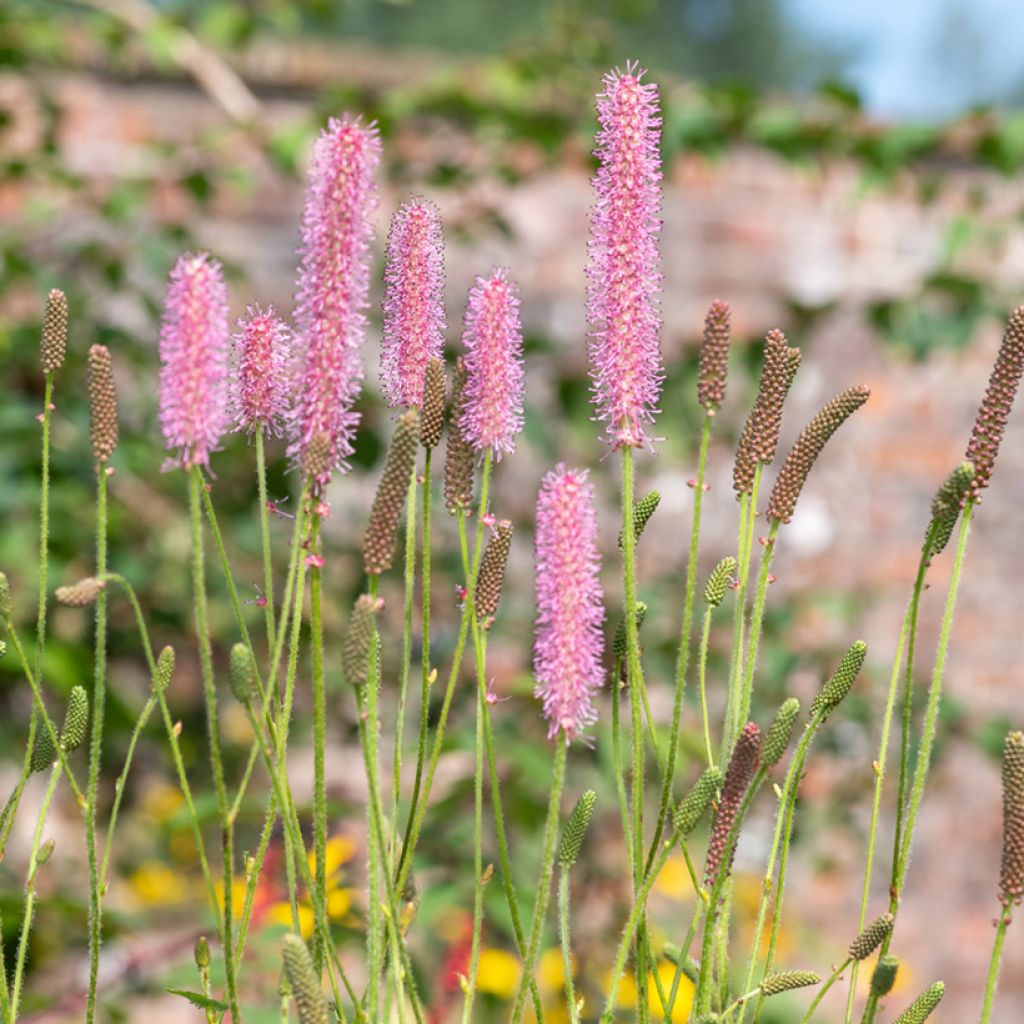

Sanguisorba hakusanensis


Sanguisorba hakusanensis


Sanguisorba hakusanensis


Sanguisorba hakusanensis
Sanguisorba hakusanensis
Sanguisorba hakusanensis
Korean Burnet
Have grown 3 leaves and then disappeared.
Nadine, 07/09/2022
Why not try an alternative variety in stock?
View all →This plant carries a 12 months recovery warranty
More information
We guarantee the quality of our plants for a full growing cycle, and will replace at our expense any plant that fails to recover under normal climatic and planting conditions.
From €5.90 for pickup delivery and €6.90 for home delivery
Express home delivery from €8.90.

Does this plant fit my garden?
Set up your Plantfit profile →
Description
Sanguisorba hakusanensis is undoubtedly one of the most beautiful botanical burnets. It is a rare and truly graceful perennial plant, which forms a beautiful rounded and neat clump, with long pinnate foliage. The fresh green colour of the leaves highlights a frothy flowering in the form of trailing pinkish-blue catkins fading into a lovely lilac tone. A beautiful species to display in the centre of a flower bed. Very hardy, it appreciates moist and light soils, without too much limestone, and a sunny to semi-shaded exposure.
Sanguisorba hakusanensis is a rhizomatous perennial belonging to the vast Rosaceae family. It is native to Japan (Haku Island) and Korea, where it naturally grows at high altitudes. It is an herbaceous and rhizomatous perennial plant, reaching a height and spread of 60cm (24in). The flowering takes place from July to September, in the form of four-petalled flowers of a rather vivid pinkish-bluish colour, grouped in trailing spikes measuring 5 to 10cm (2 to 4in) long. The gracefully arched flowers have a frothy appearance. Each floral stem has several buds that will elongate into pink catkins. Only the lower half of the spike has bisexual flowers. The particularly long leaves measure 20 to 30cm (8 to 12in). They are deciduous, odd-pinnate, and alternate, composed of petiolate and dentate leaflets. The colour of the foliage is a soft, fresh green, and its somewhat exotic appearance evokes ferns or a compact Melianthus major.
It deserves a prominent place in sunny flower beds or borders. The flowers can be used in bouquets. Plant it alone or in groups of 3, in the company of wormwood (Artemisia lactiflora), Eupatorium rugosum 'Chocolate', pink echinaceas, Thalictrum delavayi var. decorum, and paniculate phlox. Its foliage will be highlighted by spring bulbs that naturalise well, such as multiflorous tulips, small-flowered narcissus, or Fritillaria meleagris.
Etymology of Sanguisorba: the name comes from the Latin word SANGUIS, which means blood, and SORBERE, which means to absorb, directly related to the haemostatic properties (which stop bleeding) of the roots used in herbal medicine.
Report an error about the product description
Sanguisorba hakusanensis in pictures


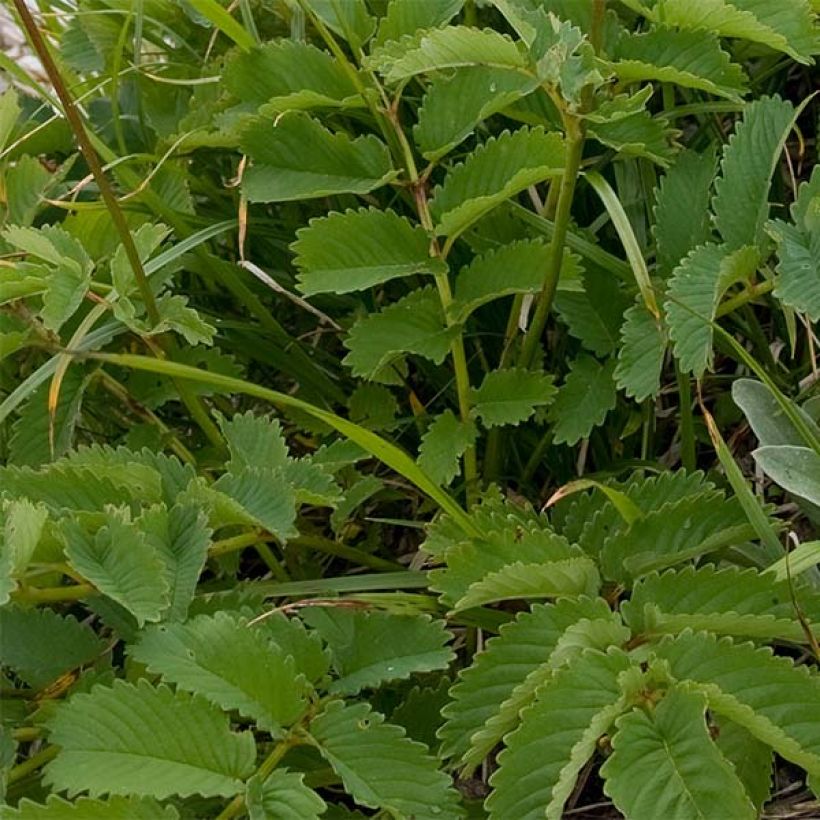

Flowering
Foliage
Plant habit
Botanical data
Sanguisorba
hakusanensis
Rosaceae
Korean Burnet
Southeast Asia
Other Sanguisorba
Planting and care
Plant Sanguisorba hakusanensis in spring or autumn, maintaining an average planting distance of 50cm (20in). To quickly achieve a beautiful effect, we recommend planting in groups of 3 to 5 young plants. This plant prefers moist soil and a sunny to semi-shaded exposure. It can tolerate any non-limestone, well-drained garden soil. Being hardy, it can withstand temperatures as low as -29°C (-20.2°F). Clumps can be easily divided in early spring. Trim the foliage after flowering, in autumn, as soon as it is no longer aesthetically pleasing.
Planting period
Intended location
Care
-
, onOrder confirmed
Reply from on Promesse de fleurs
Summer flowering perennials
Haven't found what you were looking for?
Hardiness is the lowest winter temperature a plant can endure without suffering serious damage or even dying. However, hardiness is affected by location (a sheltered area, such as a patio), protection (winter cover) and soil type (hardiness is improved by well-drained soil).

Photo Sharing Terms & Conditions
In order to encourage gardeners to interact and share their experiences, Promesse de fleurs offers various media enabling content to be uploaded onto its Site - in particular via the ‘Photo sharing’ module.
The User agrees to refrain from:
- Posting any content that is illegal, prejudicial, insulting, racist, inciteful to hatred, revisionist, contrary to public decency, that infringes on privacy or on the privacy rights of third parties, in particular the publicity rights of persons and goods, intellectual property rights, or the right to privacy.
- Submitting content on behalf of a third party;
- Impersonate the identity of a third party and/or publish any personal information about a third party;
In general, the User undertakes to refrain from any unethical behaviour.
All Content (in particular text, comments, files, images, photos, videos, creative works, etc.), which may be subject to property or intellectual property rights, image or other private rights, shall remain the property of the User, subject to the limited rights granted by the terms of the licence granted by Promesse de fleurs as stated below. Users are at liberty to publish or not to publish such Content on the Site, notably via the ‘Photo Sharing’ facility, and accept that this Content shall be made public and freely accessible, notably on the Internet.
Users further acknowledge, undertake to have ,and guarantee that they hold all necessary rights and permissions to publish such material on the Site, in particular with regard to the legislation in force pertaining to any privacy, property, intellectual property, image, or contractual rights, or rights of any other nature. By publishing such Content on the Site, Users acknowledge accepting full liability as publishers of the Content within the meaning of the law, and grant Promesse de fleurs, free of charge, an inclusive, worldwide licence for the said Content for the entire duration of its publication, including all reproduction, representation, up/downloading, displaying, performing, transmission, and storage rights.
Users also grant permission for their name to be linked to the Content and accept that this link may not always be made available.
By engaging in posting material, Users consent to their Content becoming automatically accessible on the Internet, in particular on other sites and/or blogs and/or web pages of the Promesse de fleurs site, including in particular social pages and the Promesse de fleurs catalogue.
Users may secure the removal of entrusted content free of charge by issuing a simple request via our contact form.
The flowering period indicated on our website applies to countries and regions located in USDA zone 8 (France, the United Kingdom, Ireland, the Netherlands, etc.)
It will vary according to where you live:
- In zones 9 to 10 (Italy, Spain, Greece, etc.), flowering will occur about 2 to 4 weeks earlier.
- In zones 6 to 7 (Germany, Poland, Slovenia, and lower mountainous regions), flowering will be delayed by 2 to 3 weeks.
- In zone 5 (Central Europe, Scandinavia), blooming will be delayed by 3 to 5 weeks.
In temperate climates, pruning of spring-flowering shrubs (forsythia, spireas, etc.) should be done just after flowering.
Pruning of summer-flowering shrubs (Indian Lilac, Perovskia, etc.) can be done in winter or spring.
In cold regions as well as with frost-sensitive plants, avoid pruning too early when severe frosts may still occur.
The planting period indicated on our website applies to countries and regions located in USDA zone 8 (France, United Kingdom, Ireland, Netherlands).
It will vary according to where you live:
- In Mediterranean zones (Marseille, Madrid, Milan, etc.), autumn and winter are the best planting periods.
- In continental zones (Strasbourg, Munich, Vienna, etc.), delay planting by 2 to 3 weeks in spring and bring it forward by 2 to 4 weeks in autumn.
- In mountainous regions (the Alps, Pyrenees, Carpathians, etc.), it is best to plant in late spring (May-June) or late summer (August-September).
The harvesting period indicated on our website applies to countries and regions in USDA zone 8 (France, England, Ireland, the Netherlands).
In colder areas (Scandinavia, Poland, Austria...) fruit and vegetable harvests are likely to be delayed by 3-4 weeks.
In warmer areas (Italy, Spain, Greece, etc.), harvesting will probably take place earlier, depending on weather conditions.
The sowing periods indicated on our website apply to countries and regions within USDA Zone 8 (France, UK, Ireland, Netherlands).
In colder areas (Scandinavia, Poland, Austria...), delay any outdoor sowing by 3-4 weeks, or sow under glass.
In warmer climes (Italy, Spain, Greece, etc.), bring outdoor sowing forward by a few weeks.




































